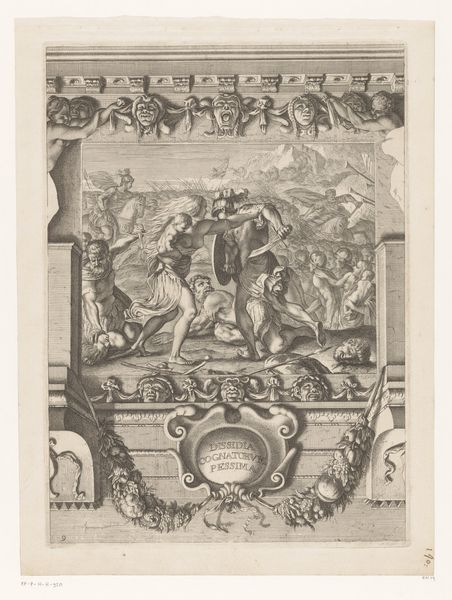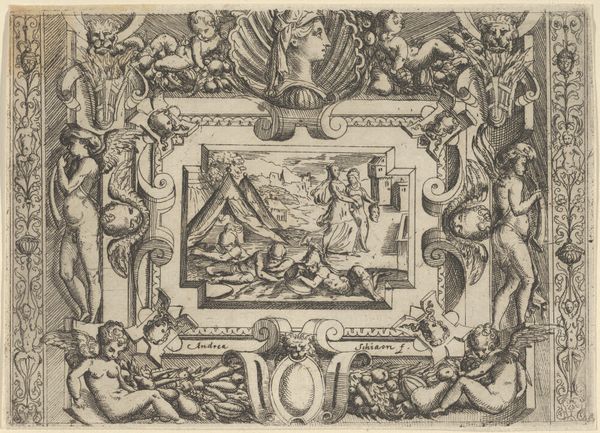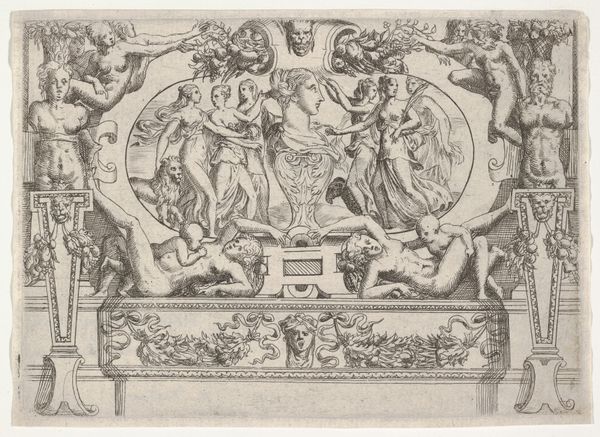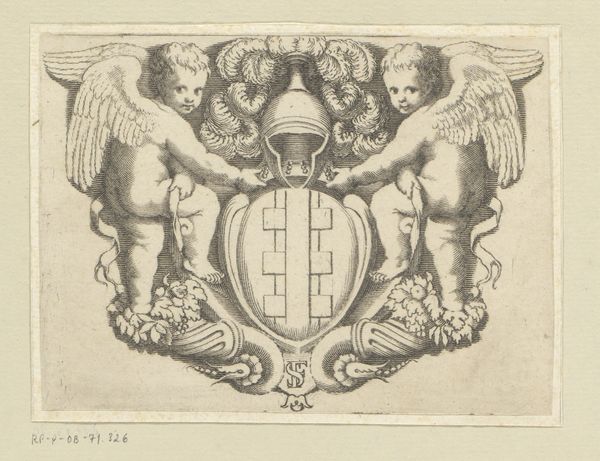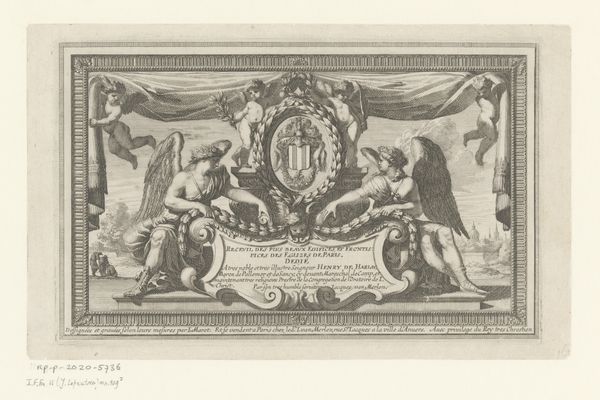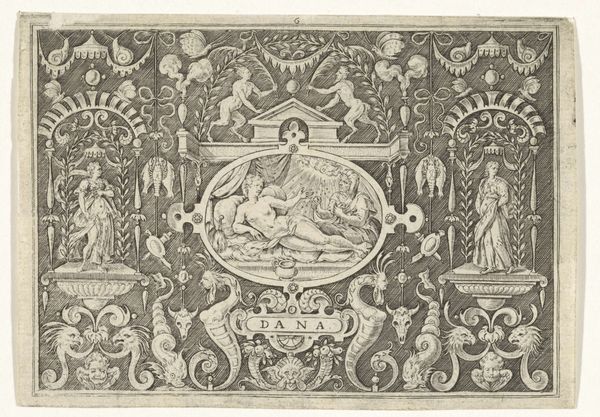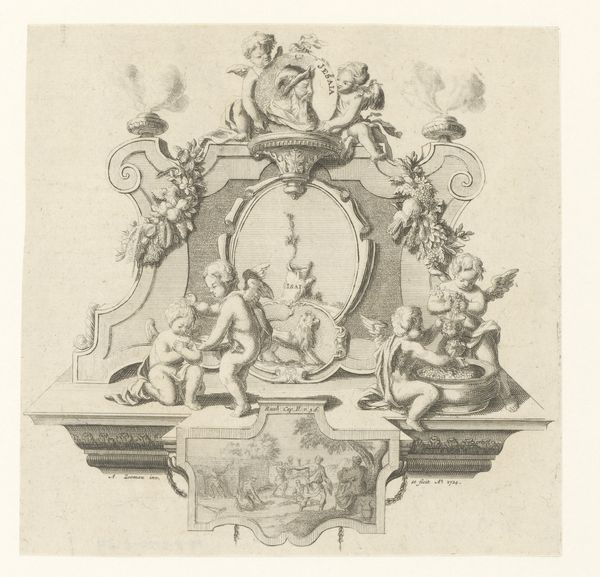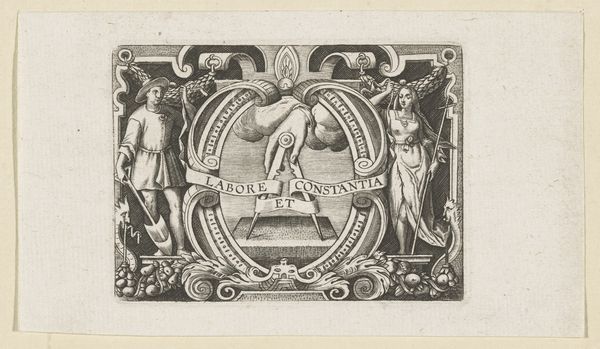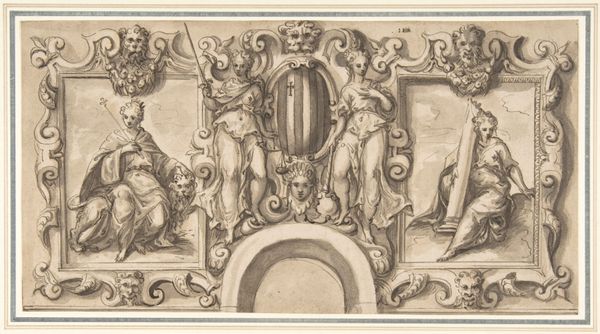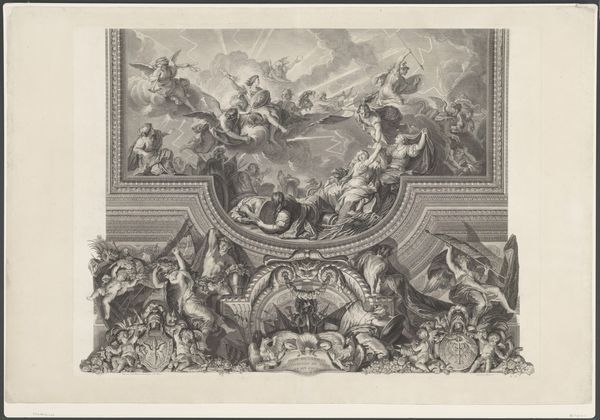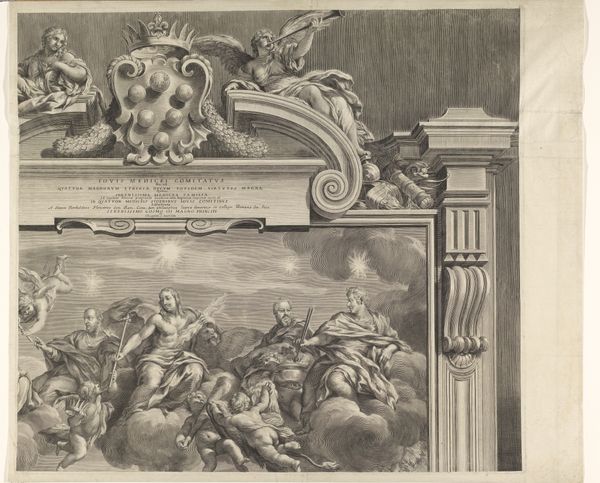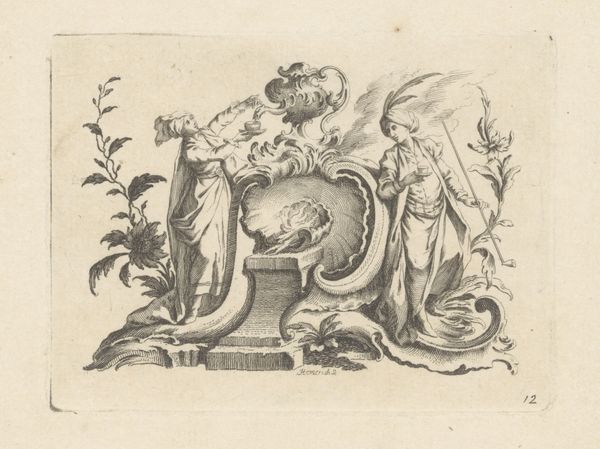
The coat of arms of Claude de Rueil (ca.1581-1649), Bishop of Bayonne, later Bishop of Angers 1620 - 1650
0:00
0:00
drawing, print, engraving
#
drawing
#
allegory
#
baroque
# print
#
history-painting
#
engraving
Dimensions: Sheet: 10 5/8 × 13 11/16 in. (27 × 34.8 cm) Image: 10 3/8 × 13 9/16 in. (26.3 × 34.4 cm)
Copyright: Public Domain
Editor: This engraving, "The coat of arms of Claude de Rueil," made sometime between 1620 and 1650, is quite striking! I'm curious about what this piece communicates about power and identity in the 17th century. What stands out to you most about this artwork? Curator: Immediately, the performative aspect of power leaps out. This isn’t just a static symbol; it's a carefully staged assertion of authority. The Bishop's coat of arms is held aloft by angelic figures, literally elevated, almost divinely ordained. How does that visual language intersect with the sociopolitical realities of the period? Editor: It’s interesting to think about the religious context. The Bishop's status is reinforced by the angels, so is this a message of spiritual as well as secular power? Curator: Precisely. It intertwines divine legitimacy with earthly influence. The Baroque style – known for its drama and grandeur – amplifies this effect, constructing an image of unassailable authority. What about the choice of the bestiary in the shield itself? Does that choice seem symbolic? Editor: The griffin imagery in the coat of arms is fascinating. Is that meant to evoke something specific about the Bishop himself, such as courage, strength, vigilance? Curator: Perhaps, or perhaps it links to family history. Heraldry was deeply rooted in lineage, marking claims to territory, legitimacy and access to resources. It’s crucial to examine whose stories get told and how – whose histories are visualized and whose are erased within these power structures. Think about it: art acts as both a mirror reflecting societal values and a hammer shaping them. What stories might be absent here? Editor: That’s powerful. I see how analyzing this engraving through a social and historical lens makes it more than just a pretty picture; it’s a complex document reflecting its time. Curator: Exactly. This engraving opens conversations about how identity, power, and faith intersect within broader social narratives, hopefully driving critical dialogues about those same forces still at play today.
Comments
No comments
Be the first to comment and join the conversation on the ultimate creative platform.
